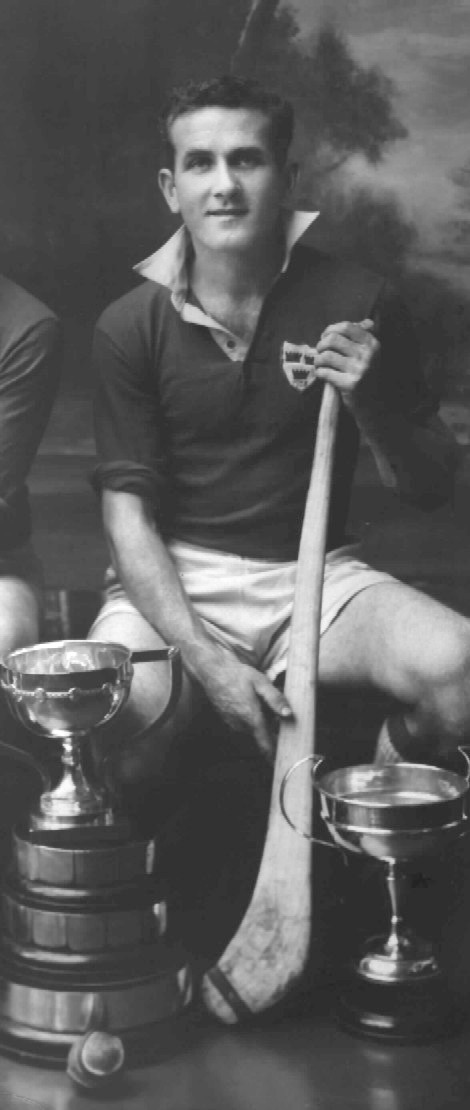PHILLY GRIMES (1929-89)
An
obituary written on the occasion of Philly's death in 1989
by Pat Fanning, Past President G.A.A
 |
Philly Grimes died on May 8, 1989, his sixtieth birthday. The sad event, following on a long illness borne with a courage worthy of the man, cast a shadow over the whole world of hurling. For Philly Grimes, of Mount Sion and Waterford, was a legendary figure, a hurling giant in an era of giants. He was a man who shed lustre on the game he loved, a man whose incomparable skill, indomitable courage and exemplary sportsmanship made of him a model for young players everywhere. It is the measure of the man's impact on the hurling scene in his own time that Grimes is remembered still, all of thirty years after he bestrode the hurling world like a Collossus, and his many moments of glory recalled as near examples of all that is unique, and perfect, in the art of hurling. I watched Phil Grimes when he was a youngster and throughout a career that spanned two decades. It was obvious that here was a youngster destined for stardom - whatever his choice of game or athletic event. |
|
For Grimes, the hurler supreme, was no mean footballer and also could have scaled the heights in track and field events. He was a natural from the word go, with his magnificent, perfectly proportioned body and his truly remarkable co-ordination that made the hurley a part of the man. A mere recitation of Philly's achievements on the field would not capture anything of the spirit of the man, nor would it reflect the sheer artistry of his craft. But the record is there and must be unfolded. Philly was a vital element in Waterford's Munster championship triumphs in 1957, '59, and '63. His Munster championship medal awarded in 1948 makes him the only Waterford man to hold four such medals. He won his second All-Ireland senior medal as a midfielder in 1959, and was at corner-forward in his third and last All-lreland final appearance against Kilkenny in 1963. In between, he was a regular on Munster teams for several years, collecting four Railway cup awards with his province. In addition he helped Mount Sion to four county senior football titles. That is a brief outline of a remarkable career in hurling and it is an impressive record. But what of the man himself and what of the highlights and memorable moments that will be recalled and re-told whenever hurling men get together and the name of Philly Grimes arises? His captaincy of Waterford in the Munster and All-Ireland finals reflected the leadership qualities of a man who always led by example. His spirit and competitiveness were demonstrated in memorable displays for Munster with, and against, the great men of a great era. His ability to achieve the impossible and make it look simple through his skill, contributed much to the creation of a hurling ideal. In a career of many highlights it is difficult and even invidious to
select just one moment of glory. But
that Munster final performance against Cork in 1959 portrays, fully, all
that made Grimes a hurler supreme. That was the day he switched from midfield to centre-half in a
crisis situation, to turn seeming defeat into glorious victory. That must rank as one of the greatest individual displays of
attacking centre-back play. Men
who played with him, and against him, and the thousands who watched and
admired him will have their own particular recollection of Grimes the
hurler, the stylist, the player of perfect co-ordination of mind and
body. In top form and in
full flight, Philly Grimes was poetry in motion, demonstrating, in
movement and beauty of striking, the art form that is hurling as played
by the artist. Philly Grimes contributed much to the game of hurling and, in all that he attempted and in all that he achieved, he was an example and an inspiration to those around him. Were I asked to suggest an inscription on his grave, I would write, simply, Phil Grimes – Hurler. He would ask for nothing more; he deserves no less. Let that, then, be the epitaph of one of Ireland’s greatest hurling men. |